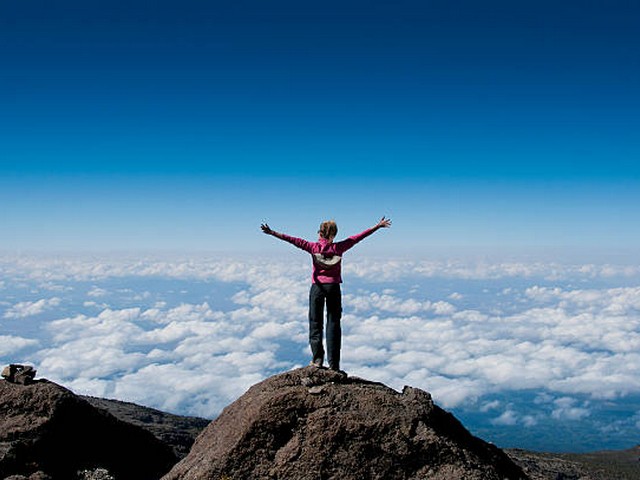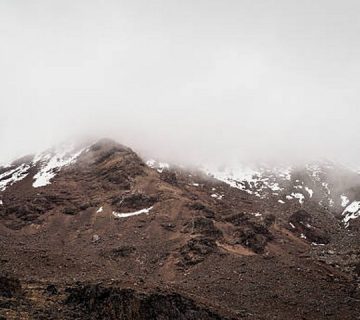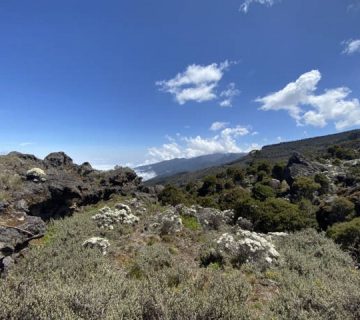Lightweight Gear for Kilimanjaro Trekking: The Ultimate Guide
Scaling the majestic heights of Mount Kilimanjaro, the highest peak in Africa, is a dream for many adventurers across the globe. As you prepare for this once-in-a-lifetime trek, one crucial aspect that can make or break your journey is the gear you choose to take with you. At Kilimanjaro Centre for Trekking and Ecotourism (KCTE), we understand that the right equipment is not just about comfort and functionality—it’s about enhancing your overall experience while ensuring sustainability and safety.
Today, we delve deep into the essentials of Lightweight Gear for Kilimanjaro Trekking, helping you to ascend confidently with gear that feels like a feather but acts like a shield.
Why Lightweight Gear Matters
Trekking Kilimanjaro is not your everyday hike; it involves multiple climate zones, rigorous paths, and long days. Here, every ounce matters. Lightweight gear reduces your overall load, allowing you to conserve energy, move more comfortably, and enjoy the stunning vistas without the burden of unnecessary weight. It’s all about traveling smarter, not harder.
Essentials of Lightweight Gear for Kilimanjaro
Clothing: Layer Like a Pro
When it comes to clothing, layering is key. But remember, effective layering does not mean bulky packing. Opt for:
- Base Layer: Look for moisture-wicking materials such as merino wool or synthetic fibers that keep you dry and warm.
- Insulating Layer: A lightweight fleece or down jacket provides warmth without the weight.
- Outer Layer: A waterproof and breathable shell jacket and pants are indispensable against the elements.
Footwear: Lightweight Yet Sturdy
Choosing the right footwear can significantly impact your trekking experience. Aim for:
- Hiking Boots: Ensure they are well-fitted, broken-in, waterproof, and lightweight. Ankle support is crucial to navigate Kilimanjaro’s varied terrains.
- Trail Shoes: For lower elevations, consider lighter trail shoes for comfort during dry conditions.
Backpack: Your Trusty Companion
Your backpack is your home during the trek. A lightweight, durable, and comfortable backpack with a capacity of 35-40 liters is ideal for carrying your essentials. Key features to look for include:
- Adjustable straps for a snug fit
- Multiple compartments for easy access
- A hydration reservoir to keep you hydrated on the move
Sleeping Gear: Comfort in the Wilderness
After a long day of trekking, a good night’s sleep is priceless. Your sleeping gear should include:
- Sleeping Bag: Opt for a lightweight, compressible, and season-appropriate sleeping bag.
- Sleeping Pad: A light, inflatable pad can provide the comfort you need without adding bulk to your pack.
Accessories: The Devil’s in the Details
Don’t overlook the small but mighty accessories:
- Headlamp: A lightweight LED headlamp with extra batteries.
- Trekking Poles: Adjustable and collapsible poles that offer support and stability.
- Water Filtration: Stay hydrated with a lightweight water filter or purification tablets.
Tips for Packing Light
- Test Your Gear: Before you embark, test every piece of gear. This not only ensures functionality but also helps you familiarize yourself with your equipment.
- Pack Multipurpose Items: Choose gear that serves more than one purpose. This reduces the need for extra items.
- Evaluate Every Item: If it’s not essential, leave it behind. Aim to pack items that are crucial for safety, comfort, and the success of your trek.
Choose KCTE for Your Kilimanjaro Adventure
At Kilimanjaro Centre for Trekking and Ecotourism (KCTE), we not only provide expert guidance and support but also offer tailored advice on the best lightweight gear for your Kilimanjaro trek. Our experienced team ensures that you are fully prepared to face the challenges and enjoy the breathtaking beauty of Kilimanjaro.
FAQ: Everything You Need to Know About Lightweight Gear for Kilimanjaro
Q1: How much should my total pack weight be for Kilimanjaro?
A1: Aim to keep your total pack weight under 20 pounds (9 kg), as this will enhance your mobility and endurance.
Q2: Can I rent gear from KCTE?
A2: Yes, KCTE offers high-quality rental options for essential trekking gear. This is a great way to access lightweight, top-tier equipment.
Q3: What should I wear on summit night?
A3: Summit night is the coldest. Layer extensively with your base layer, insulating layer, and a substantial outer layer. Don’t forget warm gloves, a beanie, and thermal socks.
Q4: How do I ensure my gear is environmentally friendly?
A4: Opt for gear from brands committed to sustainability. Consider durable items that offer longevity over disposability.
Q5: What is the best way to train with my gear before the trek?
A5: Regularly hike or walk with your filled backpack. This builds stamina and helps you adjust to the weight you’ll be carrying.
Ready to Conquer Kilimanjaro?
Embarking on a trek up Kilimanjaro is exhilarating, and with the right lightweight gear, your journey will be as rewarding as the summit view. Book your Kilimanjaro climbing adventure with Kilimanjaro Centre for Trekking and Ecotourism (KCTE) today, and step into the wild, well-equipped and inspired. Remember, every step you take is a step closer to the roof of Africa.
Contact us now to start planning your dream climb with the best in the business. Let’s make your Kilimanjaro journey unforgettable!




